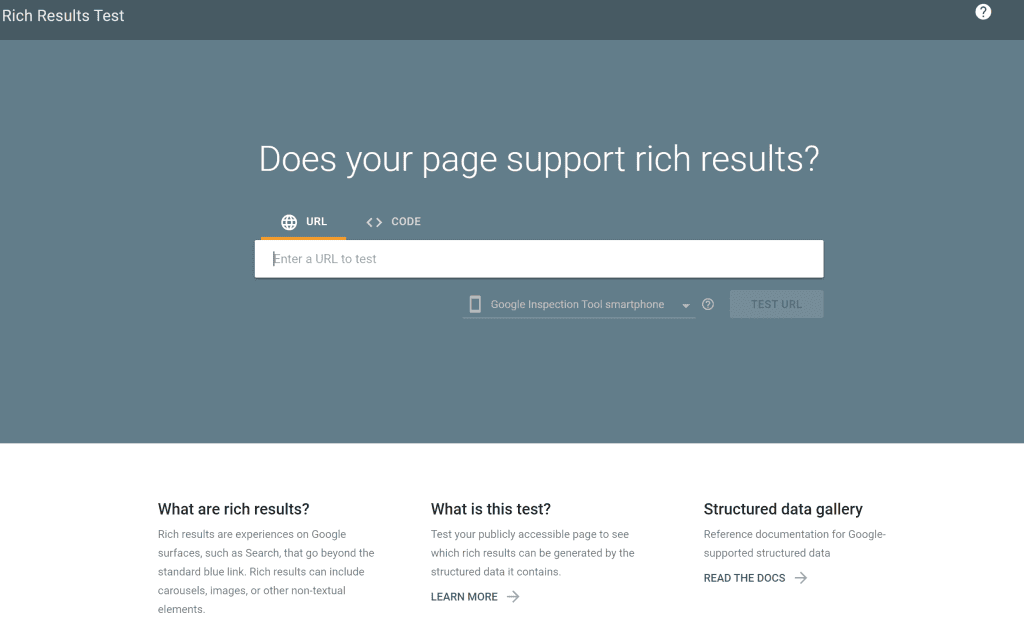Whenever you use a search engine like Google to find a product, company or service, very often a short piece of text will appear immediately below each search result. This brief caption is called a ‘Rich Snippet’ and represents a small snapshot of key information from that listing. Schema markup can help display rich snippets, which significantly improves the chances of search engines showcasing this enhanced content. Rich snippets enhance Google search results by displaying additional data like ratings, images, and prices. As an example, here’s a location specific Rich Snippets for Edge Digital:
While focusing on such a short paragraph might sound like a pointless detail to an online marketeer, effective manipulation of that Rich Snippets could be the reason that a new customer clicks through to your website rather than anywhere else.
This is where the coding becomes interesting, because Rich Snippets can be crafted to suit the core message of your platform in a variety of ways; pulling out product detail, flagging five star reviews or linking directly to your site’s social media networks.

Getting Started with Rich Snippets
In order to create Rich Snippets, it’s important to learn how content is generally read and interpreted by the major search engines such as Google. Structured data markup is the insertion of a piece of code, written according to a specific vocabulary and usually invisibly embedded within your site.
When internet search engines scour your site for information to populate their indexes, the mutually recognised code will be re-digested into a Rich Snippet. Google Search Console is a valuable tool for monitoring structured data and diagnosing issues related to schema code.
In fact, this information goes further than just Rich Snippets; Google and other search engines will also use this information to index your content more effectively, using it to power new and developing tools such as Google’s Knowledge Graph for authoritative content.
If you are unsure of whether structured data already exists on your site, then visit Google’s Structured Data testing tool. The testing tool asks you to enter your website’s URL and is the easiest way to reveal any working structured data already active on the site.
How to Implement Structured Data Markup on your Website
First, visit Schema.org or Google’s Structured Data testing tool to work out which type of structured data is most appropriate to enhance your website for a target audience. Implementing rich snippet code is crucial for improving visibility in search results. Structured data code plays a significant role in implementing rich snippets, helping search engines understand your content better.
If you are not sure which library to use, here’s a note on differentiation: Google’s tool is far more user friendly (especially to the uninitiated), but the Schema.org vocabulary supports a more extensive range of options.
In any case, both library tools contain the vocabulary to support structured data markup for the most common types of data to promote, including Products, Recipes, Reviews, Events and Software Apps.
Creating Tantalising Rich Snippets
The best way to think about selecting the most useful data to markup on your site, is to think about your overall business objectives in attracting an online audience.
If it is an e-commerce site or other selling platform, then highlighting vocabulary tags such as Product and Price are going to be quite influential for a shopper skimming search engines for the best deal. This is also a good place to label the top selling attributes of your product.
On the other hand, if the website supports a physical shop that can be easily coordinated using Google Maps, then perhaps Location, Telephone and Opening Hours would be more useful.
Alternatively, consider boosting reviews to Rich Snippet status. You can markup data using an ‘aggregate rating’ so that the Rich Snippet contains a reviews average from across the web. Review snippets display ratings from various review websites, enhancing the visual appeal with yellow star ratings. (Obviously, before selecting this option it is a good idea to double-check that such a rating will reflect positively on your brand or product!)
You can find some more helpful examples of the different ways to markup data to suit a particular business purpose here.
Deciding on a structured data markup format
The second major task is to decide on which markup format to use. That’s right, more choice! On the markup table currently are JSON-LD, RDFa, RDFa Lite and microdata. It is important to use the Rich Results Test tool for verifying and validating structured data to ensure eligibility for rich snippets. As a general rule, RDFa and microdata can be used for basic structured data markups but JSON-LD (the most recent addition) can be easily embedded within a script tag in the HTML
Currently Google suggests using JSON-LD for more powerful websites which contain data pertaining to Knowledge Graphs, Sitelink search boxes or Event Related Rich Snippets.
Testing whether your Structured Data Markup is Working with Rich Results Test
Test code is crucial to ensure eligibility for rich snippets. Whatever data format you choose, the structured data will need to be tested in order to make sure it works. We suggest you do this using both Google’s Structured Data Testing Tool and selecting another at random from this comprehensive list of external validators.
Why should I use Rich Snippets & Google’s Structured Data
1. Enhanced Search Visibility:
Rich snippets and Google’s Structured Data can significantly enhance your search visibility by providing more detailed and visually appealing information directly in search results. This can include ratings, reviews, product prices, and more, making your listings stand out among competitors and increasing the likelihood of attracting clicks.

2. Improved Click-Through Rates (CTR):
By offering additional context and visual elements in search results, rich snippets can lead to higher click-through rates. Users are more likely to click on search results that provide immediate value and relevant information, such as star ratings or product availability, directly in the search preview.
3. Better Targeting for Voice Search:
Structured data helps your content be more easily understood by search engines, which is crucial for voice search optimization. As more users rely on voice assistants, having your content structured correctly increases the chances that your site will be recommended in response to voice queries, driving more traffic to your website.
4. Increased Credibility and Trust:
Rich snippets often display additional information like reviews and ratings, which can enhance the perceived credibility and trustworthiness of your site. When users see positive reviews or detailed product information directly in search results, they are more likely to trust your brand and consider visiting your site for more information or making a purchase.
Q&A top questions on Rich Snippets
Q1: What are Rich Snippets and Google’s Structured Data?
Rich Snippets are enhanced search result listings that display additional information beyond the standard title, URL, and meta description. Rich snippets enhance the visibility of structured data within web pages, providing additional context about the content. Google’s Structured Data refers to a standardized format used to provide this extra information to search engines. By adding structured data to your website, you enable search engines to better understand the content and present it in a more engaging way, such as showing ratings, reviews, product prices, and other relevant details in search results.
Q2: How do Rich Snippets benefit my website?
A2: Rich Snippets can significantly improve your website’s visibility and attractiveness in search results, leading to higher click-through rates (CTR). By displaying additional information like ratings, prices, or event details directly in search results, Rich Snippets make your listings stand out, encouraging users to click on your link over others. This can result in more organic traffic and potentially higher conversions.
Q3: Is implementing Structured Data on my website difficult?
A3: Implementing Structured Data can be straightforward, especially with the help of various tools and plugins available for popular content management systems like WordPress. Google also provides detailed guidelines and a Structured Data Markup Helper to assist with the process. While it may require some basic understanding of HTML and schema markup, many website builders and SEO tools simplify the process for users without extensive technical knowledge.
Q4: Will using Structured Data improve my search rankings?
A4: While using Structured Data itself may not directly boost your search rankings, it can indirectly improve your SEO performance. By making your search listings more appealing through Rich Snippets, you can achieve higher CTRs, which is a positive signal to search engines. Increased user engagement, coupled with better visibility in search results, can contribute to improved overall search rankings over time.



